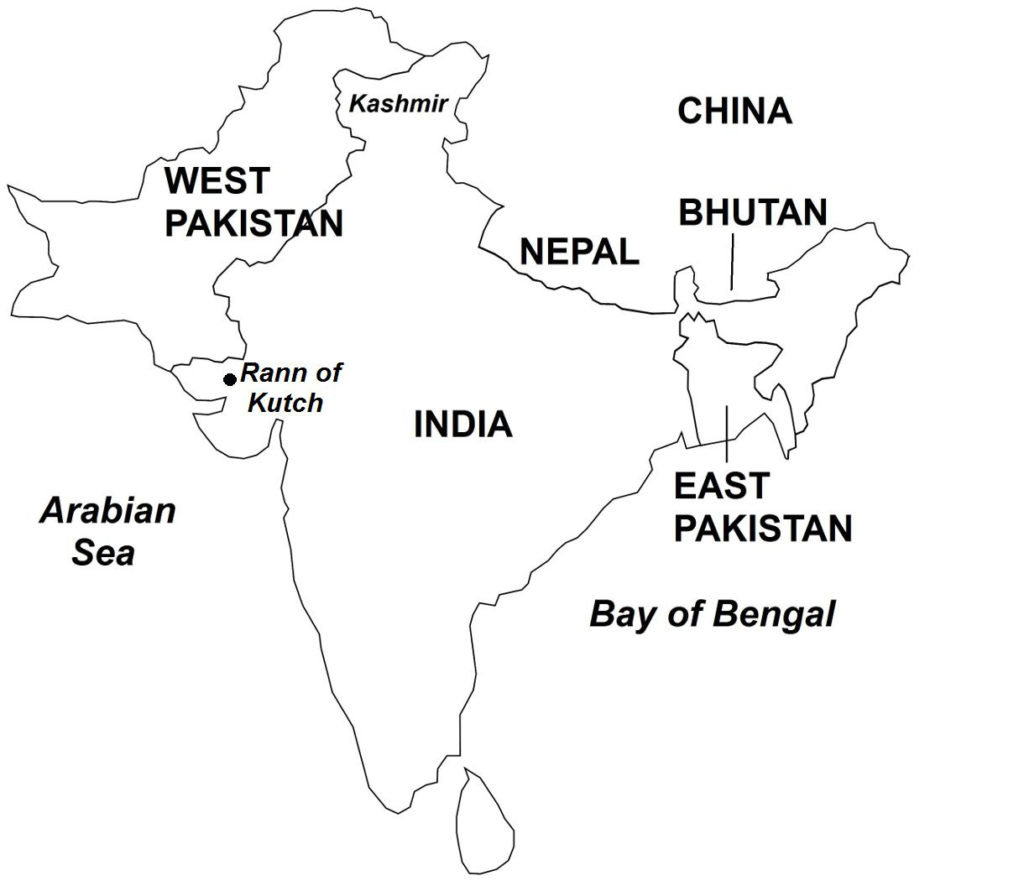On September 6, 1965, Indian forces opened a new front by attacking Pakistan Punjab in the Indian-Pakistani War of 1965. The attack was launched to ease pressure on the lightly defended Indian-controlled Kashmir which was under threat from a powerful Pakistan armoured, air, and infantry offensive that had begun on September 1. Its flank threatened by the Indian counterattack, the Pakistani Army stopped its advance in Kashmir to divert forces to the new front.

(Taken from Indian-Pakistani War of 1965 – Wars of the 20th Century – Volume 2)
Background As a result of the Indian-Pakistani War of 1947 (previous article), the former Princely State of Kashmir was divided militarily under zones of occupation by the Indian Army and the Pakistani Army. Consequently, the governments of India and Pakistan established local administrations in their respective zones of control, these areas ultimately becoming de facto territories of their respective countries. However, Pakistan was determined to drive away the Indians from Kashmir and annex the whole region. As Pakistan and Kashmir had predominantly Muslim populations, the Pakistani government believed that Kashmiris detested being under Indian rule and would welcome and support an invasion by Pakistan. Furthermore, Pakistan’s government received reports that civilian protests in Kashmir indicated that Kashmiris were ready to revolt against the Indian regional government.
The Pakistani Army believed itself superior to its Indian counterpart. In early 1965, armed clashes broke out in disputed territory in the Rann of Kutch in Gujarat State, India (Map 3). Subsequently in 1968, Pakistan was awarded 350 square miles of the territory by the International Court of Justice. In 1965, India was still smarting from a defeat to China in the 1962 Sino-Indian War; as a result, Pakistan believed that the Indian Army’s morale was low. Furthermore, Pakistan had upgraded its Armed Forces with purchases of modern weapons from the United States, while India was yet in the midst of modernizing its military forces.
In the summer of 1965, Pakistan made preparations for invading Indian-held Kashmir. To assist the operation, Pakistani commandos would penetrate Kashmir’s major urban areas, carry out sabotage operations against military installations and public infrastructures, and distribute firearms to civilians in order to incite a revolt. Pakistani military planners believed that Pakistan would have greater bargaining power with the presence of a civilian uprising, in case the war went to international arbitration.
War On August 5, 1965 and the days that followed, some 30,000 Pakistani soldiers posing as civilians crossed the ceasefire line (the de facto border resulting from the 1947 Indian-Pakistani War) and entered Indian-held Kashmir. The Pakistani infiltrators carried out some sabotage activities but failed to incite a general civilian uprising. The Indian Army, tipped off by informers, crushed the operation, killing many Pakistani infiltrators and forcing others to flee back to Pakistan.
Then on August 15, the Indian forces crossed the western ceasefire line and entered Pakistani-held Kashmir. The offensive made considerable progress until it was slowed at Tithwail and Pooch, upon the arrival of Pakistani Army reinforcements. By month’s end, the battle lines had settled (Map 4).
The Indian Army cut off all escape routes for the remaining Pakistani commandos in Kashmir. In order to take the pressure off the trapped commandos, the Pakistani Army carried out an offensive aimed at Jammu. On September 1, in what became the first of many large tank and air battles of the war, Pakistan opened a combined armored and air attack on the town of Akhnoor. The capture of Akhnoor would cut India’s communications and supply lines between Kashmir and the rest of the country. Furthermore, Jammu, which was India’s logistical base in Kashmir, would come under direct threat. The surprise and strength of the offensive caught the Indian Army off-guard, allowing the Pakistanis to win territory. However, the Pakistani Army stopped before reaching its objectives and made a command change to the operation. The delay allowed the Indian Army to regroup and mount a strong defense. When the Pakistani forces restarted their offensive, they were stopped decisively near Akhnoor.
